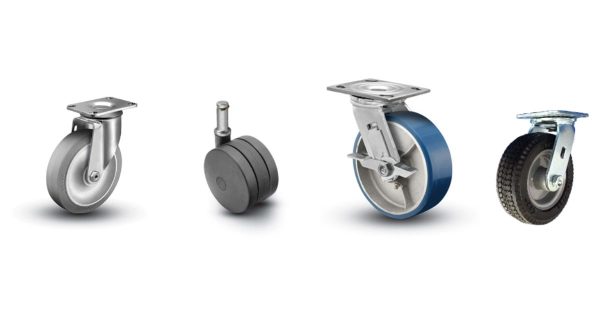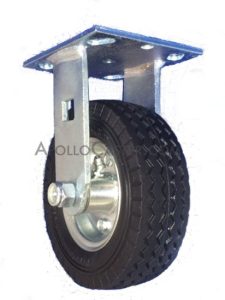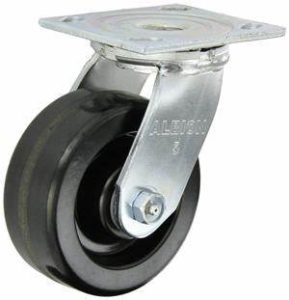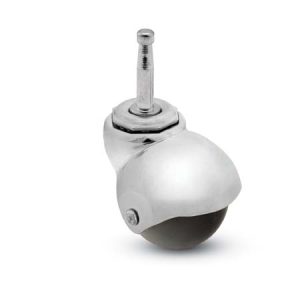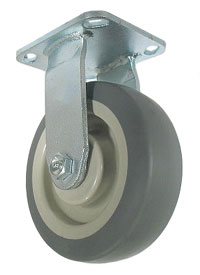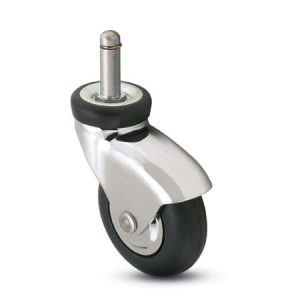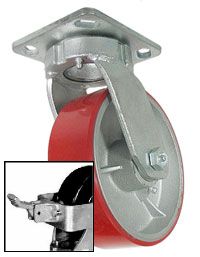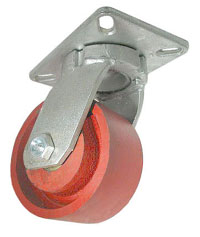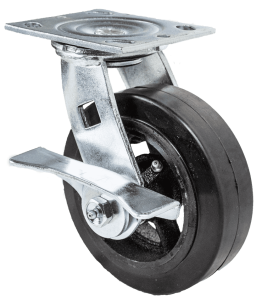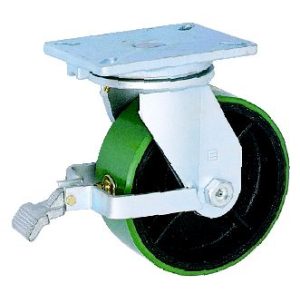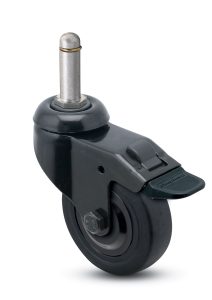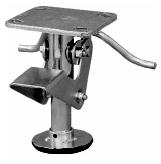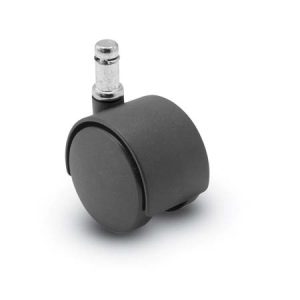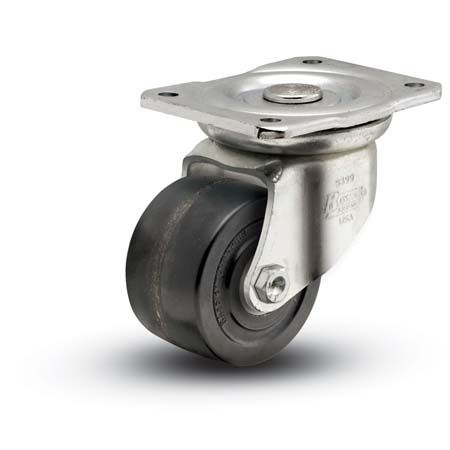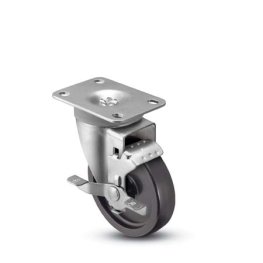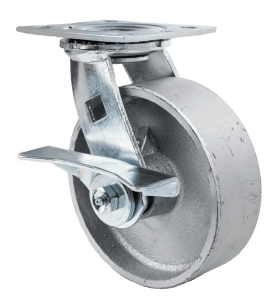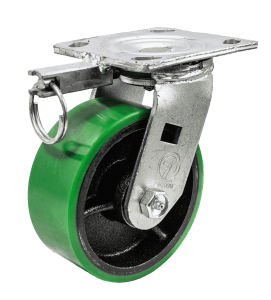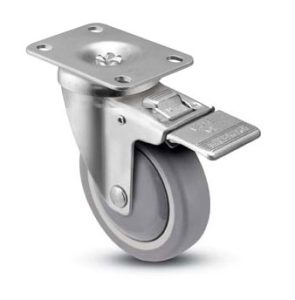
When it comes to easily moving items in commercial and residential settings, it can be difficult to lift objects or always have machinery such as forklifts or hand trucks nearby. Outdoor swivel casters can dramatically upgrade your ability to move even large objects quickly and with no need to lift.
Our outdoor casters provide the required quality and durability and can last for years in many home, commercial and industrial applications. Whether you need casters to help move heavy objects in a warehouse, want to move equipment in a farm environment, or need reliable casters to make furniture easier to move on your deck, you can shop and trust us for your outdoor caster needs.
Factors to Consider When Choosing Outdoor Caster Wheels
One of the first things that needs to be factored in when selecting outdoor casters, whether it’s for residential or commercial applications, is load capacity. Here’s a scenario where outdoor caster selection and usage made a big difference for farmers’ market vendors:
A vendor struggled with her heavy produce cart. One particularly challenging day, the vendor saw another person effortlessly glide their cart into place. Intrigued, she inquired about it. The neighboring vendor pointed out their outdoor swivel casters attached to their cart, explaining how these robust caster wheels made navigation so much easier, even on rough surfaces.
The casters’ durability, weather resistance, and ability to rotate 360 degrees revolutionized the movement of the heavy market stands. Soon most of the vendors concluded that heavy duty outdoor casters were a must-have for their carts to save time and energy.
Terrain
Load capacity is one element you’ll consider when selecting outdoor caster wheels, and another is the terrain where they’ll be used. After all, rolling a pallet across smooth factory concrete is far different from rolling sound equipment across the turf to an outdoor venue. Here at Apollo Caster, we sell specific all terrain outdoor casters and all terrain caster wheels that will excel in a variety of applications. Here we highlight offroad casters that are perfect for load capacity and outdoor terrain:
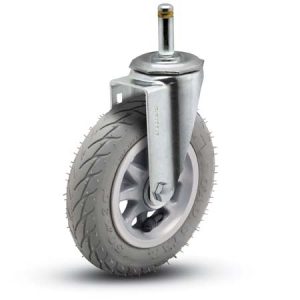
Caster; Swivel; 6″ x 1-1/4″; Flat Free (Gray); Grip Ring (7/16″x1-7/16″); Zinc; Ball Brng; 150# (Item #69280): Flat Free (also known as semi-pneumatic) are extremely popular caster wheels. Made to perform like pneumatic tires, they are filled with lightweight, microcellular polyurethane foam. They retain the lightweight, bounce and cushion like a pneumatic tire without the nuisance of air leaks. They are made from high-strength steel for added durability and include a raceway dust cap for increased caster life and performance. This caster is NSF approved (less thread guards) and offers a durable zinc finish. It features a 6” wheel diameter. The load rating for this caster is 150 lbs.
If you’d like a flat-free outdoor caster that offers a 280 lb. rating, we recommend this product:
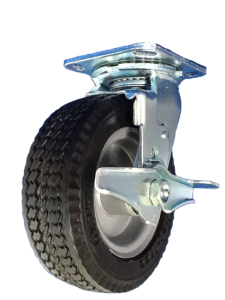
Their lightweight, microcellular polyurethane foam provides the same bounce and cushion as a pneumatic tire without the inconvenience of air leaks. You’ll benefit from this caster’s durability and high load capacity, plus it features a big 10” wheel diameter.
Outdoor Caster Wheels for Tough Environmental Conditions
Apollo Caster’s casters are made to deliver outstanding performance and stand up longer against rain, snow, and harmful UV rays that can break down other casters. Here we highlight some top Apollo Caster thermoplastic outdoor casters and wheels that stand up to most everything nature dishes out:
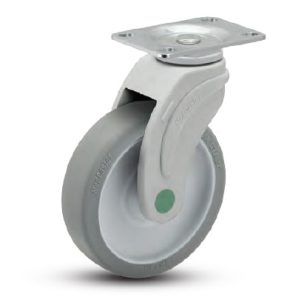
Caster; Swiv; 4″ x 1-1/4″; Thermoplas Rbr (GY); Plate (2-1/2″x3-5/8″: holes: 1-3/4″x2-13/16″ (slots 3-1/16″); 5/16″ bolt); Nylon (GY); Prec Brng; 150#; Non-magn (Item #63312): With a 4” wheel width and 11/4” tread width, these thermoplastic rubber casters are perfect for many outdoor applications.
If you’re looking for outdoor casters and wheels that are perfect for farm and garage projects, you’ll want to look at this caster that has a load capacity of 600 lbs.:
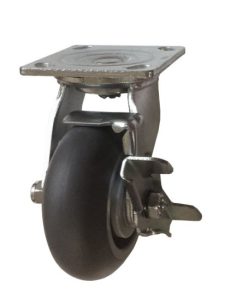
With an 8” wheel diameter and 2” tread depth, this is one of the best casters for outdoor use. It can roll over small debris and withstand tough elements due to its thermoplastic rubber construction.
Maneuverability
There are many uses for outdoor casters that enhance easy movement, such as this item, due to its high-strength steel construction and 250 lb. load capacity: Caster; Swivel; 4 x 1-1/4; Monoprene (Donut); Plate (2-5/8×3-3/4; holes: 1-3/4×2-3/4 slotted to 3; 5/16 bolt); Zinc; Precision Ball Bearing; 250#; Total Lock (Item #66627) It is a good selection for this scenario:
Imagine being able to reconfigure your outdoor cooking area at a moment’s notice. With swivel casters, you can do just that. You can attach them to the base of your large grills, prep stations, and serving carts to create a dynamic kitchen that adapts to your needs. Whether you’re hosting an intimate gathering or a large event, you’ll have the freedom to adjust your layout quickly and efficiently.
Another scenario where outdoor casters can transform a setting is for commercial landscaping and gardening businesses. Casters save time and labor and reduce the risk of injury associated with manual lifting and moving heavy containers. These heavy-duty outdoor casters would work well in this application due to their solid construction, with a 10” wheel diameter and 3” tread: Caster; Rigid; 10″ x 3″; Flat Free; Plate (4″x4-1/2″; holes: 2-5/8″x3-5/8″ slotted to 3×3; 3/8 bolt); Prec Ball Brng; 280#; Sawtooth tread (Matches 66576) (Item #66575).
Best Outdoor Casters for Different Applications
Industrial and Commercial Use
Our company sells top-quality industrial and commercial outdoor casters that excel in a range of applications. These heavy duty casters for outdoor use offer great benefits in warehouses, factories and construction sites. This caster will do the job in those applications:
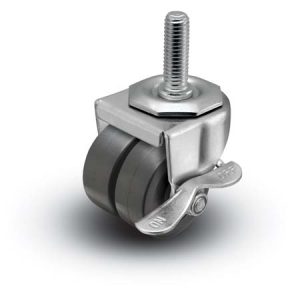
With a 225 lb. load capacity, the Caster; Dual Wheel; Swivel; 2″ x 7/8″ (x2); Rubber (Hard; Non-marking); Threaded Stem (3/8″-16TPI x 1-1/2″); Zinc; Plain bore; 225#; Side brake (Item #66814) gives you the durability, dependability and flexibility you need for any industrial application. It offers a lockable side brake, 2” wheel diameter, and ⅞” tread width.
Residential Use
Durability is a big concern for outdoor furnishings and equipment, and we sell many outdoor swivel casters that will perform well in the elements, including:
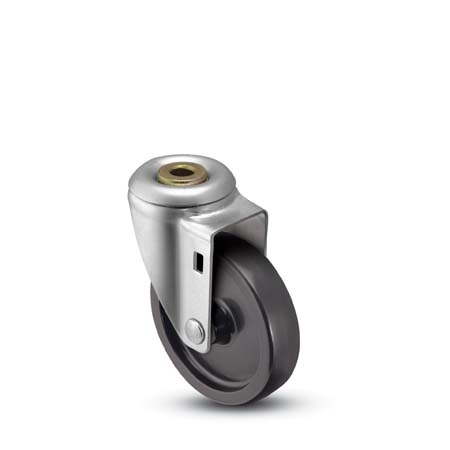
Caster; Swivel; 3″ x 1-1/4″; Polyolefin; Hollow Kingpin (1/2″ bolt hole); Zinc; Steel Spanner; 300# (Item #63297): This attractive swivel caster would work great on your patio or deck. It offers a 300-lb. load capacity and provides durability and ease of movement at an affordable price point.
Another good caster you may wish to consider for residential use is our Caster; Swivel; 3″ x 13/16″; Thermoplasticized Rubber (Gray); Grip Ring (7/16″ x 1-3/8″ w/ brass band); Zinc; Plain bore; 110# (Item #63131). These economical, Made in USA outdoor swivel casters feature high-strength and heat-treated steel for increased durability and caster life. They are easy to install and are great for carts and as casters for outdoor furniture.
Specialty Applications
Apollo Caster is your go-to source for outdoor swivel casters that are perfect for agricultural equipment, food service and more. Here are some highlighted products:
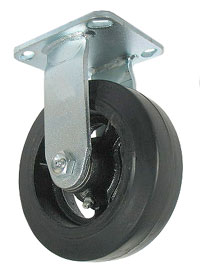
One of our top load-rated casters at 1,000 lbs., Caster; Rigid; 10″ x 3″; Rubber on Cast Iron; Plate (4-1/2″x6-1/4″; holes: 2-7/16″x4-15/16″ slotted to 3-3/8″x5-1/4″; 1/2″ bolt); Zinc; Roller Brng; 1000# (Item #63852) offers 23/64” thick double-welded legs that provide superior strength against side impact and abuse, extending the life of these heavy duty outdoor casters. It’s perfect for moist and wet environments, food service equipment, factories, platform trucks and hotel equipment. It’s another of our best casters for outdoor use.
Also, check out our gate casters
Outdoor Casters Maintenance Tips
You’ll want to keep your Apollo Caster outdoor casters in good condition so they perform optimally. Regular cleaning and inspection for dirt and debris is recommended; cleaning with a soft, damp cloth is often sufficient to keep them in great shape.
Upgrade to Top-Quality Apollo Caster Products
Upgrade all your commercial, industrial, farm and home settings with Apollo Caster outdoor casters. Here at Apollo Caster, we have heavy-duty casters for outdoor use all in one place for easy ordering. We are happy to advise you if you need help selecting your casters. Whether you need farmhouse casters, waterproof casters, caster wheels for a lawn mower, caster wheels for a snow plow, industrial, commercial, or residential outdoor casters, we have them. Please call 1.888.344.3036, or contact us online.
Check out our Casters 101 Tutorial, which can help you select the appropriate casters for your application.



